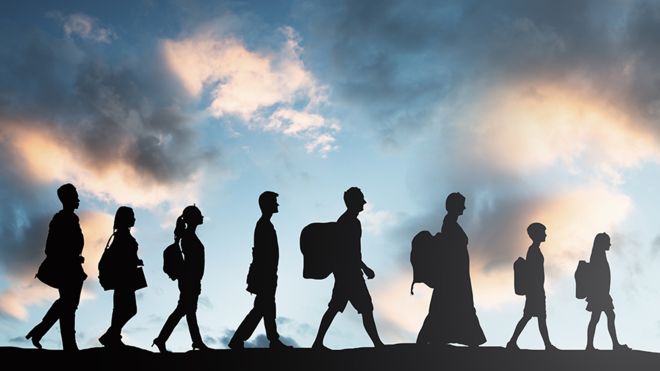By Akanimo Sampson
A vast majority of Nigerians seeking asylum in Norway are being rejected. In 2018 for instance, those who know better say the rejection rate was 94%. Though few were granted asylum, many still plausibly qualify as vulnerable.
Norway is a country that in the last 15 years has experienced an upsurge in asylum applications from people from Nigeria. Within this period, Nigerians have been the largest national group of possible victims of human trafficking in this European country.
The authorities have been making efforts to offer assisted return to Nigerian migrants without residence permits in Norway, and how those who are considered vulnerable may experience assisted return.
Arguably, Norwegian authorities offer comparatively generous return and reintegration assistance to those designated as vulnerable, with the stated aim of helping them overcome their vulnerabilities. But, does the assistance accomplish that?
Experts say vulnerability is a legal-bureaucratic construction rather than a given fact. Based on claims from professionals either working with Nigerian migrants or tasked with informing migrants in general about return, it seems the immigration authorities, frontline personnel and migrants themselves are displaying a series of conceptual blind spots.
Perhaps, these are producing a gendered hierarchy of vulnerabilities with two main implications.
Norway’s international obligations to protect victims of trafficking tend to affect the determination of vulnerability. As a signatory to the UN Trafficking Protocol and the Council of Europe Convention on Action against Trafficking in Human Beings, Norway has compelling reasons to provide all victims of trafficking with additional assistance and monitoring upon return.
But, most professionals seem to be focusing squarely on the sub-category of those trafficked for the purpose of prostitution. Identified victims of trafficking for other purposes in Norway were given less consideration and as such, less access to reintegration assistance.
Women are much more likely to be considered “vulnerable’’ than men. Most recognised victims of trafficking for the purpose of prostitution are women. Consequently, they more easily accessed the additional support that come with such a designation.
The professionals are more or less reflexively associating vulnerability with women. Given that male victims of trafficking are typically less likely to self-identify as victims and seek assistance as such, this compounds the problem of what is in effect institutionalised discrimination against men.
At the moment, a plethora of civic groups in Benin City, the Edo State capital, are catering to the needs of alleged victims of human trafficking upon return. Their focus is uniformly on women. Gendered biases in both Norway and Nigeria has resulted in organisations discriminating against those whose vulnerabilities are not politically convenient or do not harmonise with established stereotypes.
In the mean time, assisted return of irregular migrants and rejected asylum seekers has become an important tool of migration control. European destination states have invested massively over the last decade in assisted return, framing such return programmes in the humanitarian language of “helping’’ migrants to “come home’’ and “facilitating their reintegration’’ there.
Tagged Assisted Voluntary Return and Reintegration Programmes (AVRRs), such programmes, incentivise compliant return as an alternative to deportation, and then present it as voluntary.
In 2016, the International Organisation for Migration (IOM) offered return assistance to more than 98,000 migrants worldwide through assisted return programmes. This is the highest number of what the IOM calls ‘AVRR beneficiaries’ during the last 15 years. The ‘’assistance’’ given through AVRRs is budgeted by states as developmental aid, although there is little evidence of any positive developmental impact.
The type and scope of return and reintegration assistance varies widely across funding states. It can include plane tickets, financial support, counselling and information by the IOM or staff at the asylum reception centre, as well as in-kind (non-cash) assistance to set up a small business in the country of origin. Other types of support like for housing, medical assistance, or education, are comparatively rare.
Analysts say approximately three percent of those who received AVRR support from the IOM in 2016 were designated migrants in vulnerable situations. This small percentage equals around 3,000 people in a single year. In IOM’s wording, ‘’specific and tailored assistance is particularly critical for returning migrants in vulnerable situations…’’.
Local sources say returnees who had gone through the AVRR have been shedding light on serious shortcomings in the nuts and bolts of IOM’s programme implementation. It is being alleged that those who returned through the programme as ‘’vulnerable’’, and have been identified as having particularly acute need for support, described IOM’s service delivery as hampered by delays and bureaucracy.
Some are said to be complaining of a fundamental lack of respect by the IOM staff after returning to Nigeria.
One had to allegedly close her business as a direct consequence of delays in IOM’s delivery of in-kind assistance to support it. She also had to allegedly take her children out of school because she had not been able to pay school fees in time.
Two allegedly reported that they had to call their previous IOM caseworker in Norway to exert pressure on their caseworker in Nigeria.

